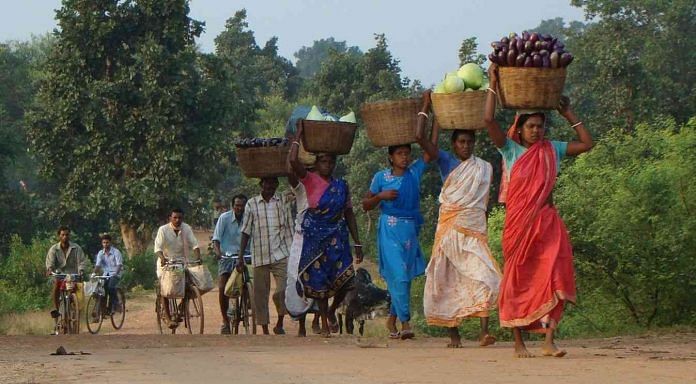Washington: Malnutrition, including micronutrient deficiency, is especially acute among women in India. In Maharashtra, the country’s second most populous state, about 50 per cent of women are chronically energy-deficient and over 75 per cent of non-pregnant and non-lactating women are anemic.
Eating a variety of fruits and vegetables is associated with reduced risk of micronutrient deficiencies and non-communicable diseases, but there have been few studies of fruit and vegetable consumption in low and middle-income countries.
Locally-grown produce may hold the key to improving diets and the nutritional status of rural women, but it is increasingly being eliminated from diets in many rural settings. This could be due to rapid urbanisation and the proximity of villages to cities, increasing contact with people from other places, misconceptions about the safety of these foods and a lack of knowledge about how to prepare them.
Our recent study in Food and Nutrition Bulletin found that breaking down misconceptions regarding locally-grown and widely-available nutritious fruits and vegetables could help improve diets and address micronutrient deficiencies among women of child-bearing age in rural India.
We and our collaborators analysed data from nine focus group discussions and 12 one-on-one interviews with 18- to 40-year-old women from eight villages surrounding eastern Maharashtra’s Wardha district — a region highly dependent on agriculture for food and income.
Despite women’s knowledge of the nutritional benefits of fruits and vegetables, we observed seven key themes limiting their ability to obtain these foods for themselves and their children — personal factors, household dynamics, social and cultural norms, workload, time pressures, environmental factors and cost.
In particular, household dynamics, and social and cultural norms were major factors. One married woman interviewed in the study said, “Women do not get to eat proper meals the way they are supposed to. Men get a proper meal.”
Food choices depend on husbands
Some women said they were so tired at the end of the day that they did not feel like eating a big meal and simply wanted to eat a small amount of bread or rice. And many of them alluded to marital norms — preventing distribution of time-consuming household chores to their husbands.
Another woman said, “How can he help me? If he helps me with household chores, then everybody in the village will gossip about him or say bad things.”
At the same time, women also talked about being at the mercy of their husbands’ food choices at the market.
Caste too played a role. For women who belonged to some select castes, it wasn’t considered acceptable to go to the market. And when fruits and vegetables were available, many women preferred that their children eat them rather than themselves. “My daughters have (fruit); this is more than enough,” a woman said. “I am not bothered about myself.”
Most women also stated that the relatively high cost of fresh produce, which includes transportation and inflation, was a major determinant of how much they consumed. But even when wild green leafy vegetables were freely available, some women remarked that these were considered “dirty” or “poor people’s food” by members of their communities.
The way forward
Increasing rural women’s fruit and vegetable consumption should be a top priority for tackling micronutrient deficiencies.
Eating more locally-grown, nutritious green leafy vegetables can help overcome micronutrient deficiencies — especially for those with a predominantly vegetarian diet.
Changing attitudes towards and increasing the knowledge of how to prepare indigenous vegetables such as ambadi and ghol would be especially effective because those crops tend to grow more readily in Maharashtra’s climatic and environmental conditions.
To break down the barriers identified in the study, schools and anganwadi (rural child care centers) could play a pivotal role in helping communities in several ways, including incorporating nutritionally beneficial indigenous crops back into women’s diets.
Children and youth could be educated about the nutritional value of indigenous crops and encouraged to play a role in addressing gender imbalances in workload and food distribution within their households.
A value chain analysis within these communities’ fruit and vegetable supply chains could also help in identifying potential interventions. In addition, collaboration between the Ministries of Agriculture, Health and Women and Child Development, and Education — as well as state and national agencies — can provide further insights into the many factors impacting diet quality.
Most importantly, communities should be encouraged to take ownership of these challenges, and be involved in designing and implementing programs to address them.
Sarah Kehoe is a Senior Research Fellow and Public Health Nutritionist with the University of Southampton; and Aulo Gelli is a Research Fellow with the International Food Policy Research Institute’s Poverty, Health, and Nutrition Division.



